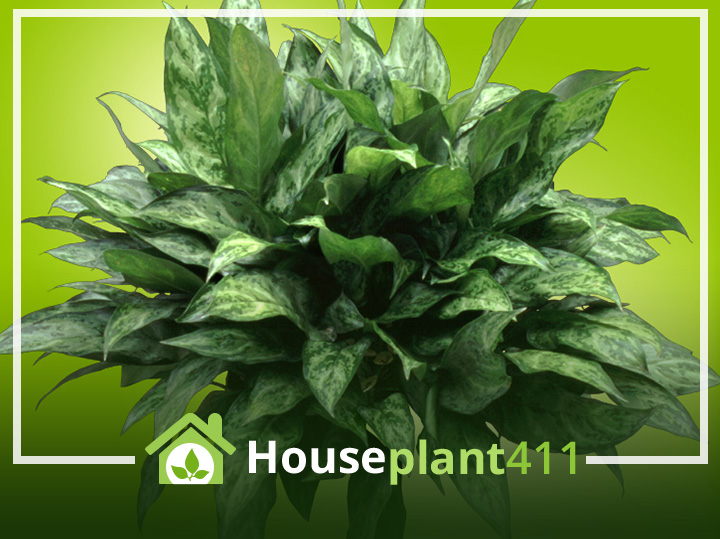A Chinese Evergreen plant is one of the easiest and best-looking houseplants to have in your home or office. Aglaonemas, the scientific name for a Chinese Evergreen, are a hardy hybrid from the aroid family and originally came from the subtropics of southeast Asia. Chinese Evergreen plants can be used as upright table plants or, as they get larger, bushy floor plants. All of the many Chinese Evergreen plant varieties have long shiny leathery leaves with unique patterns of green, gray, and cream. These plants are considered poisonous and should be kept away from pets and children. Read more about common houseplants that are dangerous in my book Don’t Feed Me to Your Cat: A Guide to Poisonous Houseplants. NASA lists the Chinese Evergreen as one of its top ten plants to clean the air of harmful toxins.
Plant Care
Light
Chinese Evergreen plants are one of the few houseplants with light green and gray in the leaves that can grow in low light. The newer varieties that have bright red, pink, yellow, and orange in the leaves require medium to bright light. Never place a Chinese Evergreen in the direct sun.
Water
Allow the top 25-30% of the soil to dry out before watering. When the soil stays too wet for a long period of time, the stalks rot and die. If the soil gets too dry or too wet, yellow leaves develop.
Fertilizer
Chinese Evergreen houseplants do not need much fertilizer. Feed every other month with a basic houseplant food diluted to 1/4 the recommended strength when the plant is actively growing.
Temperature
Temperatures below 50°F (10°C) can damage the leaves of Chinese Evergreen houseplants. Keep these plants out of cold winter drafts and away from air conditioners.
Humidity
Chinese Evergreen plants prefer regular household humidity or higher if possible.
Flowering
If your Chinese Evergreen produces flowers, I recommend immediately cutting them off. The flowers are not very attractive and use energy that the plant needs to produce its beautiful leaves.
Pests
A Chinese Evergreen plant is susceptible to mealy bugs, scale, and aphids. The “Green Solution” (recipe in Glossary of the website), sprayed on the entire plant usually solves the problem.
Diseases
In high humidity, the large leaves of a Chinese Evergreen plant may develop bacterial diseases such as leaf spot disease.
Soil
The best soil is a basic, well-aerated houseplant potting soil that drains quickly.
Pot Size
Keep a Chinese Evergreen plant in a small pot so the soil can dry out quickly and the roots are not constantly wet. This helps prevent root rot.
Pruning
If a Chinese Evergreen plant becomes thin and leggy, prune the stems a few inches above the soil line. The plant will send out new growth at the bottom of the stem and along the length of the stem.
Propagation
Chinese Evergreen plants are propagated using stem cuttings and plant division.
Clean Air Plant
NASA lists the Chinese Evergreen as one of the top 10 best houseplants to clean the air of harmful toxins.
Poisonous Plant Info
Chinese Evergreen plants are poisonous with a #2 toxicity level due to the calcium oxalate crystals in the plant. Adverse reactions after contact with the sap include: skin irritations, irritation of mouth, lips, throat, and tongue if the leaves are eaten.
FAQ
I’d remove the flowers from a Chinese Evergreen plant as soon as they appear. The flowers are really nothing more than white spaths. These spaths hinder leaf development, are not very attractive, and produce berries that weaken the plant.
Propagating a Chinese Evergreen plant is very simple and is done by Stem Cuttings or plant division.
The stems of a Chinese Evergreen get soft and mushy when the plant is over-watered. The lower the light the less water a Chinese Evergreen needs. Move your plant to a brighter, warmer location until the soil dries out. Once you move your plant back to its original location, be sure to allow the top 25%-30% of the soil to dry out before watering.
To make a Chinese Evergreen plant look full and bushy, cut off the top half of some of the tall stems. Your plant should start sending out new growth fairly quickly.
The leaves of a Chinese Evergreen plant turn yellow when the plant is not getting enough water and also turn yellow when it is getting too much water. You may have to take your Chinese Evergreen Plant out of its pot and feel the bottom of the soil to see if you are over or under-watering.
The sticky “stuff” on the leaves of your Chinese Evergreen plant is called “honeydew.” A plant pest called Mealy Bugs excretes the honeydew. Mealy Bugs are small sucking insects that look like tiny pieces of cotton on the leaves and stems of the plant.

